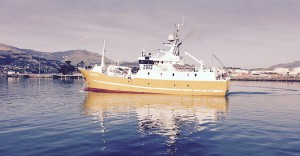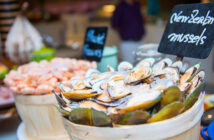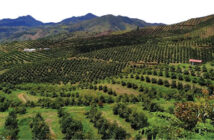
From being carbon neutrality to environmentally friendly packaging, Lyttelton-based Okains Bay Seafood is at the forefront of the New Zealand fishing industry’s drive for innovation and sustainability.
From being carbon neutrality to environmentally friendly packaging, Lyttelton-based Okains Bay Seafood is at the forefront of the New Zealand fishing industry’s drive for innovation and sustainability.
Greg Summerton, Okains’ owner and operator, says “you need to stay ahead of the game. But you don’t want to get too far out. It’s good economic sense to be three-to-five years ahead.”
He says leadership on issues close to customers’ hearts such as sustainability means Okains can sell its ling at a premium.
But what is more important, he insists, is the way the company’s respect for the fish resource, and the environment, backed by innovation, opens doors to customers.
A regular visitor to offshore markets, Summerton says customers are looking for honesty and integrity. “Our whakapapa gives them that. It’s who we are and where we’ve come from and is our guiding light into the future.”
A key chapter in the Okains’ story is the push to ensure the entire product range is carbon neutral.
The company’s vessel Kawatea runs on a mixture of pure New Zealand-made biodiesel, Biogold™ and mineral diesel. Biogold™ is produced from recycled cooking oil and sustainably grown canola (oilseed rape).
Okains is one of the country’s biggest marine biodiesel users.
Not one to sit around waiting for other people to do things, Summerton sought a track and trace system for the company’s fish – implemented in just six months – after finding the existing audit system expensive and not exactly user friendly.
“Our QR code-based system was an industry first . Summerton says. “Major buyers have been blown away by the system.”
The QR codes can be read on smart phones giving customers the current status of the fisheries, how, when and where the fish were harvested and how the fish were shipped.
Proof of provenance is critical for Okains because it catches fish with hook and bait long lining – which means it can charge a premium compared with fish caught with set nets or by trawling.
Long lining is selective allowing Okains to target high-value species such as its main product ling, and leave other fish undisturbed. The method also has a low impact on the seabed and puts better quality fish on the plate because fish are less stressed by the catching process.
Long lining is the traditional Maori way to fish, but typically Summerton has built on the old by equipping Kawatea with the latest high-quality echo soundings and plotting technology to help locate the best fishing grounds.
Like all Kiwi fish exporters, Okains’ marketing is supported by New Zealand’s world-leading fish quota management system which conserves major fisheries stocks and helps make the seafood industry more efficient.
Sustainable packaging is also part of the company’s story. Its packaging is made from sustainably harvested forestry products and the inks are water based.
Looking ahead, Summerton says the company’s next focus is to extract more value from the fish the company catches.
“The industry norm is to take the fillets from the fish and discard the rest. That’s only half the fish. We want to use 95 percent of the fish to sell high-value products – the omega, proteins, collagens and minerals.
“We are not catching more fish, but we are getting better returns from the ones we catch because we are doing more with the fish.”
NZTE is the Government’s international business development agency.
Find more international insights at www.nzte.govt.nz/news and twitter.com/NZTEnews.




























































































